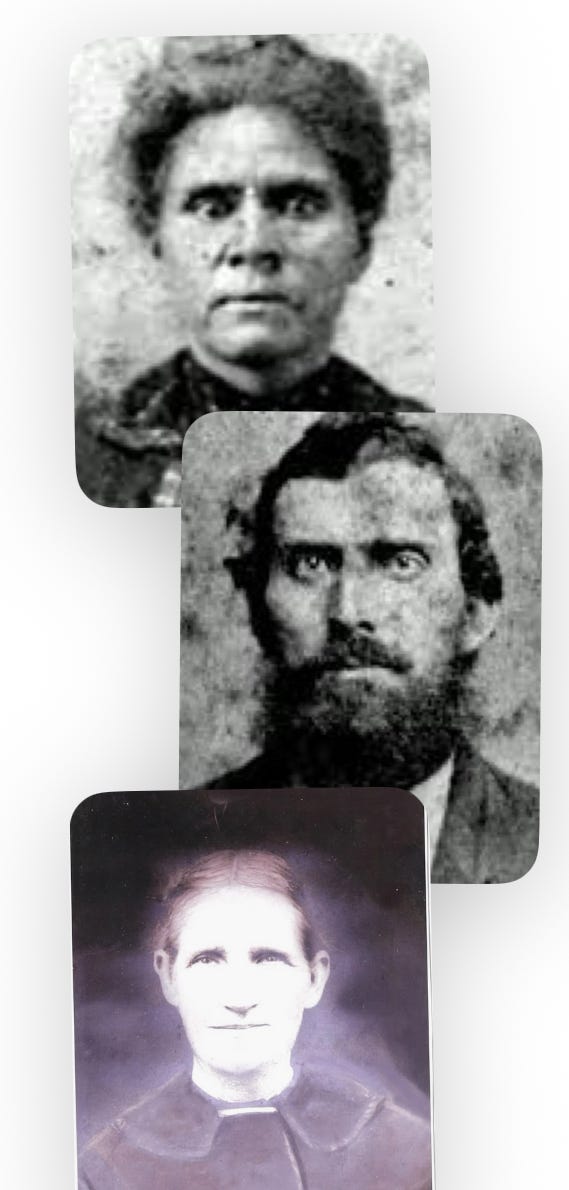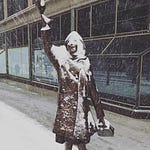Some time ago, I published two essays on Substack—Through Joe’s Eyes and Learning Not to See—about the moments I first confronted a painful truth: I had been shaped by racism. Not in theory, not distantly or abstractly, but in the deep, hidden architecture of my identity. My personal story—as a white man raised in Mississippi—had been constructed from lies, omissions, and a contorted history designed to uphold white supremacy.
And once I saw that truth, I understood that acknowledgment wasn’t enough. I had to act. To reclaim my soul, I needed to return: to Mississippi, to my people, to my past. I had to try to see it all—not through the eyes of a privileged white man, but through the eyes of a student. A man finally ready to admit all he didn’t know.
Today, I pick up where I left off. My aim is to be as specific as I can about the stories, myths, and moments that fostered my false sense of superiority.
A Model City Built on Contradictions
The Mississippi I come from is what folks call the piney barrens. It wasn’t settled by the second sons of Virginia planters who carved out fortunes in the Delta, but farther south, by subsistence farmers and herders—scrappy Scotch-Irish stock, not aristocratic blue bloods. Dogtrot houses and shotgun shacks were the norm, not grand verandas or Tara-like estates. It was a hardscrabble land—poor, isolated, and fiercely proud.
By 1891, my hometown of Laurel was little more than a backwoods hamlet—pig trails, wagon ruts, and the ever-creeping edge of the Tallahala Swamp. That year, two Yankee lumber barons arrived from forest-poor Iowa, chasing yellow pine. But they didn’t just strip the land and move on. They uprooted their families—socialite wives, private-school children—from their polished Northern lives and planted them in one of the most isolated corners of the Deep South. Their vision? To build a model city, a beacon of Northern industry and refinement.
Between 1903 and 1920, that improbable vision took root. European architects were hired to build the magnificent homes. Georgian, Italianate, Classical Revival mansions rose from the red clay and lined the new boulevards like Fabergé eggs. A Scottish golf pro laid out an 18-hole course. Landscape architects who built New York’s Central Park were contacted to design Laurel’s green spaces. A professor from the University of Chicago was hired to establish the town’s first public school system—for both white and Black children. Black workers were even placed in supervisory roles over white laborers in the mills—an unthinkable arrangement in the Jim Crow South, but the founders’ wealth allowed them to break the rules.
For a moment, Laurel was a glinting dollop of caviar atop a slab of cornbread.
The Ghost of Newt Knight and the Fear of Ambiguity
But no amount of Northern ambition could smooth over the region’s racial animus. Local whites eyed these outside influences with suspicion. And however lofty the barons’ ideals, they ran headlong into the hard grain of Piney Woods racism.
The region’s most infamous figure—Newt Knight—embodied those tensions. A Confederate deserter, Knight lived openly with two women: one white, one a former slave. He raised two families side by side, and long before the pseudoscience of eugenics arrived in Mississippi, he encouraged his children to intermarry to “whiten” the lineage of his Black descendants. By the time I was born in 1951, the area was populated by white Knights, black Knights, black Knights who look white, and all living in separate communities, none acknowledging the other as ken. Even today when you meet a Knight in Laurel, there is a stutter in the interaction while people get their bearings. In a place where race defined your name, status, and worth, ambiguity was dangerous. Northern idealism didn’t stand a chance.
The Comfort of Certainty
As a white child in Laurel, my place in the world was set from birth. Skin color defined what I could say, believe, aspire to, and whom I was allowed to hear or love or fear. It dictated where I lived, what church I went to, how I understood safety and danger, virtue and vice.
To navigate even the simplest interactions, I first had to determine: who was white, who was Black? Once I sorted that out, I could switch to autopilot and follow the internal script I’d been handed by my culture. That script protected me from having to question the status quo—or my complicity in it. It allowed me, like so many white Southerners, to say, “That’s just the way things were.” But the truth was, without race to tell us who we were, we didn’t really know.
The Myth of “Recovery”
I wish I could say that by exposing these truths—by confronting my own racism—I was free of it. But I’ve come to understand that racism is more like my alcoholism. I will always be an alcoholic—always vulnerable to the pull. White superiority operates the same way. In moments of fear or uncertainty, I sometimes find myself reaching for the familiar comforts of privilege. I rely on my whiteness to make sense of the world. I catch myself defaulting to assumptions I thought I had unlearned.
Several years ago, while signing books at a Barnes & Noble in Atlanta, I met a man who quietly unraveled my racial equilibrium.
He approached the table and handed me a copy of my novel. “Make it out to Lee,” he said. Then added, “You know, if you’re looking for a story, I got one for you.”
Writers hear that all the time. But it wasn’t what he said—it was how he said it. To my ear, his voice carried the cadence of a Black Southern man. Yet when I’d first looked up, I saw someone who, by all appearances, was white.
My confusion must have shown.
“Got you stumped, don’t I?” he said, smiling.
I admitted he had.
Why did it matter? It shouldn’t have. I want to believe that after all these years of effort and self-interrogation, I would’ve treated him the same, no matter what. And maybe I did. But there was still that split second—an internal free-fall—when I realized I didn’t know the rules. That familiar panic returned: I don’t know who I am until I know what color you are.
No matter how far I’ve come, that moment reminded me how far I still have to go.
Lee, as it turns out, is African American and lives with albinism. In our brief conversation, he told me about growing up in the Deep South—too white to be Black, too Black to be white. That’s also the title of his memoir. And it captures something essential not just about his journey, but about mine too. About the insanity that color inspires in this country.
The work of unlearning—of dismantling the architecture racism built inside me—is not a task with an endpoint. It is ongoing. It requires humility, vigilance, and the willingness to be disoriented.
That work continues.













